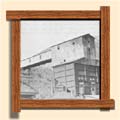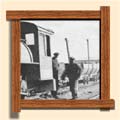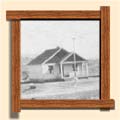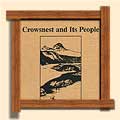 Heritage Community Foundation Presents
Heritage Community Foundation PresentsAlberta Online Encyclopedia
 |
|||
  |
|||
|
Home>> The Industry>> Mines>> Crowsnest Pass>> Hillcrest Mine |
|||
| Hillcrest Mine | |||
"In the spring and summer of 1911 a number of new company buildings had been erected on the Hillcrest townsite. These included a two-storey general office, a two-story general manager's house and another smaller two-storey house, all on the one side of main street. In addition, on the adjacent street, three two bedroom cottages for the accommodation of the mine manager and other officials were completed. My office in the main building was a large room, fitted up with drafting tables, filing cabinets, blue printing facilities, etc."
"The structure was wide enough to include a timber walk-way on one side all the way up. It had cross cleats to prevent slipping. Windows were provided through the sheathing on both sides and electric lights installed. The new tipple was a very substantial structure and able to handle all the coal we could put out. We were fast approaching our objective of 2000 tonnes a day when a major disaster occurred." Continuing Mr. Wm. Hutchinson's Memoirs:
"At the time of the Hillcrest explosion and for a number of years afterward, safety lamps were used by everyone entering a coal mine. These lamps were kept in a lamp cabin in charge of a lamp man whose duty it was to see they were kept in shape and examined before being issued to the men going on shift. These lamps were replaced by electric headlights, a very great advance in illumination. These lamps received their current from an electric battery in a metal case, carried on a waist-belt by the wearer. A rubber covered cable connected the lamp to the battery. The firebosses, who were responsible for examining the gas, carried the old safety lamp as well as wearing the headlights." Mr. Hutchinson was assistant general manager and chief
engineer at Hillcrest Mine when war was declared in August 1914.
He enlisted on September 1 that year, served on the European
battlefields, received his discharge in April, 1919, and
returned to Hillcrest. He picked up his former position at the
mine. This article is extracted from Crowsnest and its People: Millennium Edition (Coleman, Alberta, Crowsnest Pass Historical Society, 2000) . The Heritage Community Foundation and the Year of the Coal Miner Consortium would like to thank the authors and the Crowsnest Pass Historical Society for permission to reprint this material. |
|||
 |
|||
For more on coal mining in Western Canada, visit Peel’s Prairie Provinces.




